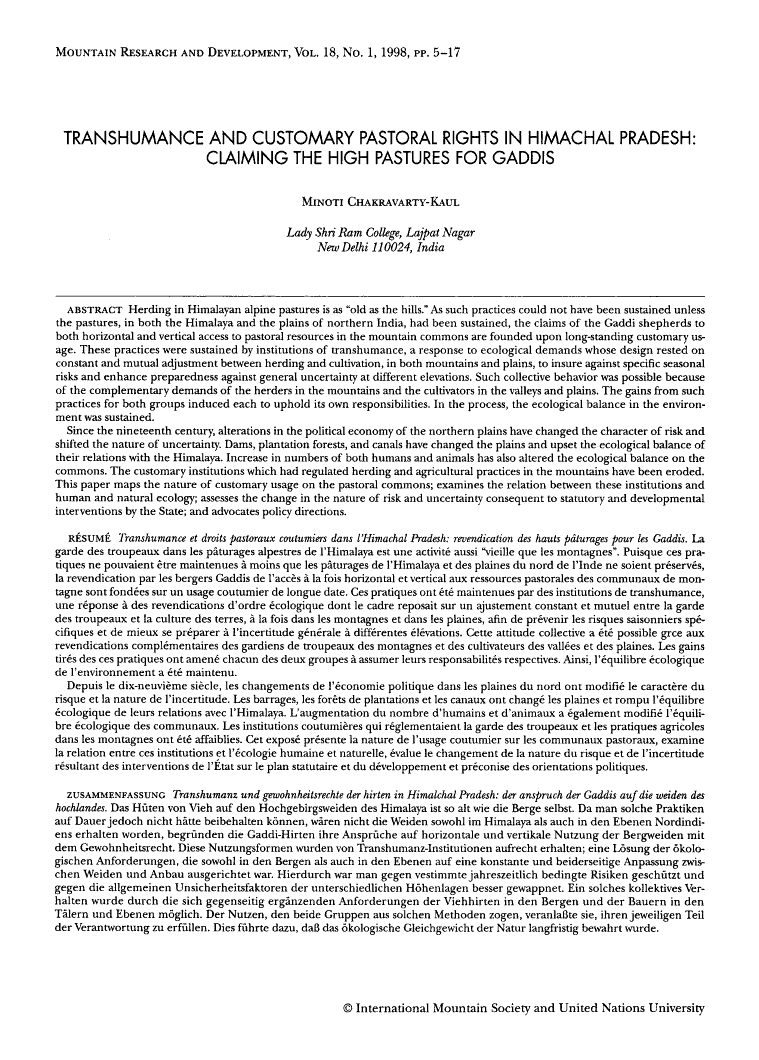
Herding in Himalayan alpine pastures is as "old as the hills." As such practices could not have been sustained unless the pastures, in both the Himalaya and the plains of northern India, had been sustained, the claims of the Gaddi shepherds to both horizontal and vertical access to pastoral resources in the mountain commons are founded upon long-standing customary usage. These practices were sustained by institutions of transhumance, a response to ecological demands whose design rested on constant and mutual adjustment between herding and cultivation, in both mountains and plains, to insure against specific seasonal risks and enhance preparedness against general uncertainty at different elevations. Such collective behavior was possible because of the complementary demands of the herders in the mountains and the cultivators in the valleys and plains. The gains from such practices for both groups induced each to uphold its own responsibilities. In the process, the ecological balance in the environment was sustained. Since the nineteenth century, alterations in the political economy of the northern plains have changed the character of risk and shifted the nature of uncertainty. Dams, plantation forests, and canals have changed the plains and upset the ecological balance of their relations with the Himalaya. Increase in numbers of both humans and animals has also altered the ecological balance on the commons. The customary institutions which had regulated herding and agricultural practices in the mountains have been eroded. This paper maps the nature of customary usage on the pastoral commons; examines the relation between these institutions and human and natural ecology; assesses the change in the nature of risk and uncertainty consequent to statutory and developmental interventions by the State; and advocates policy directions. /// La garde des troupeaux dans les pâturages alpestres de l'Himalaya est une activité aussi "vieille que les montagnes". Puisque ces pratiques ne pouvaient être maintenues à moins que les pâturages de l'Himalaya et des plaines du nord de l'Inde ne soient préservés, la revendication par les bergers Gaddis de l'accès à la fois horizontal et vertical aux ressources pastorales des communaux de montagne sont fondées sur un usage coutumier de longue date. Ces pratiques ont été maintenues par des institutions de transhumance,